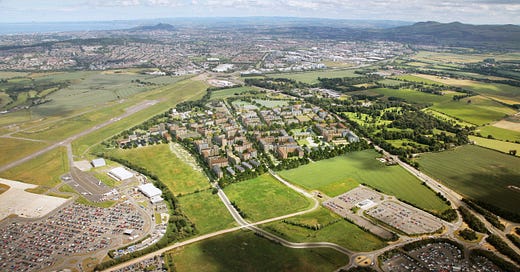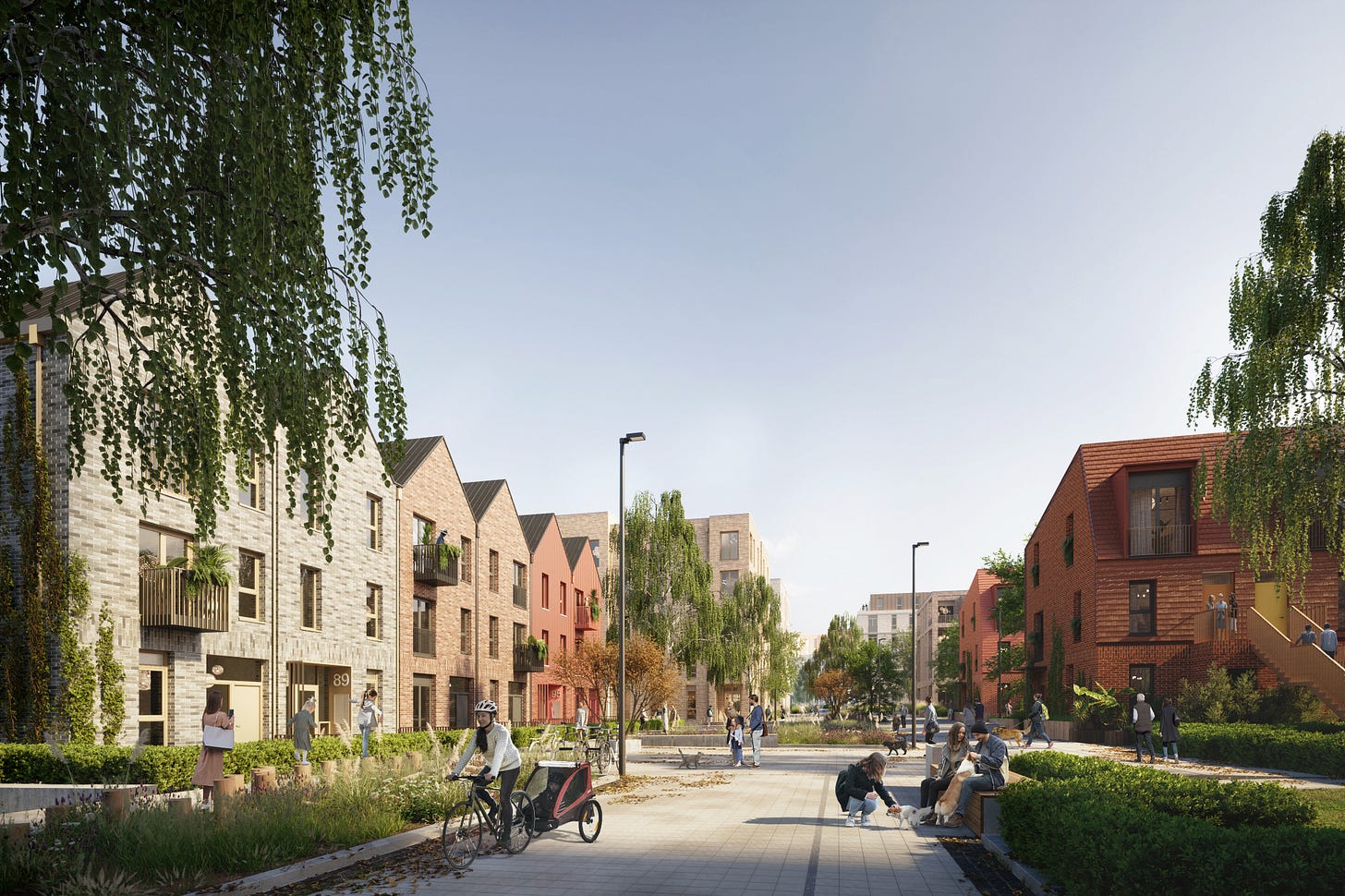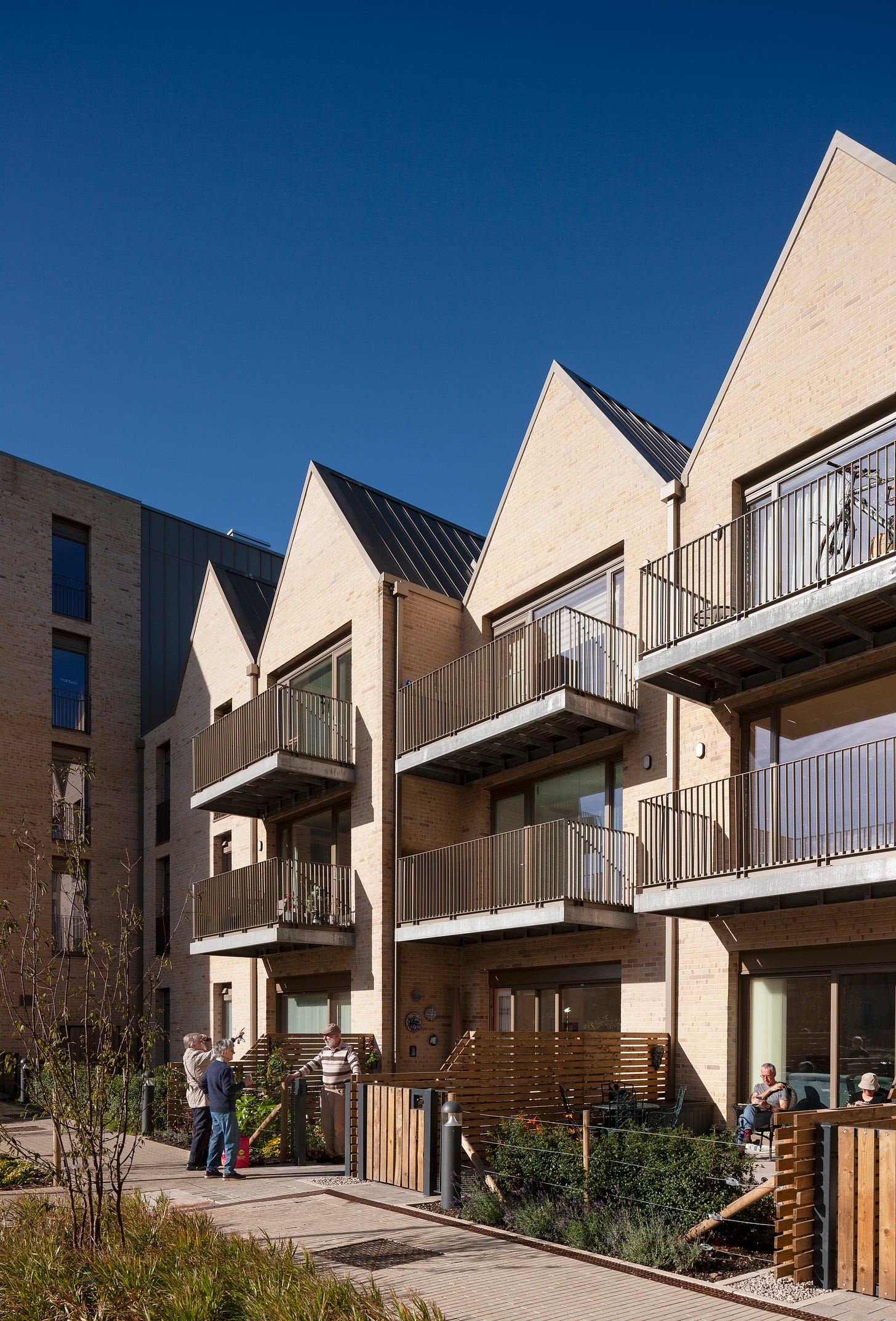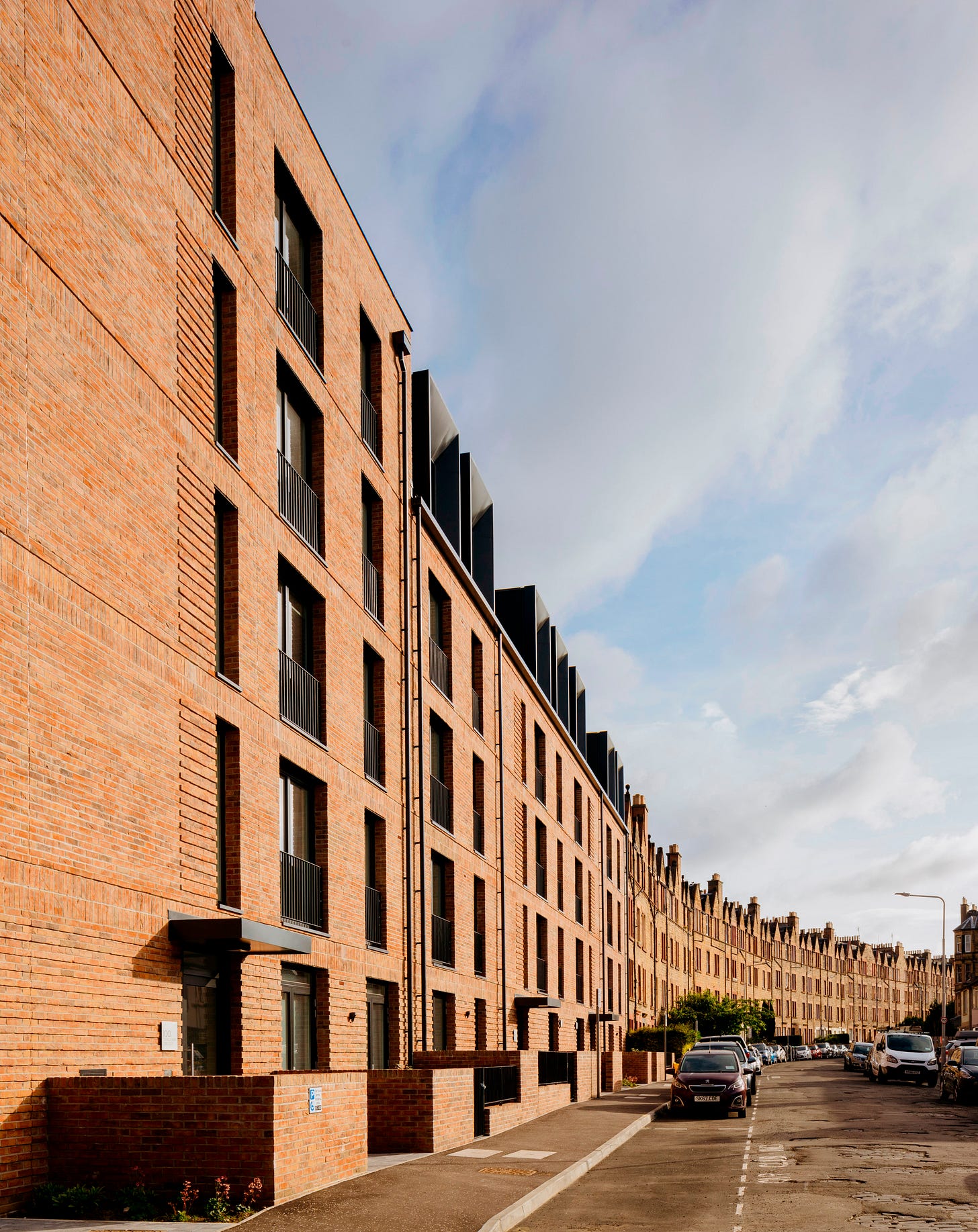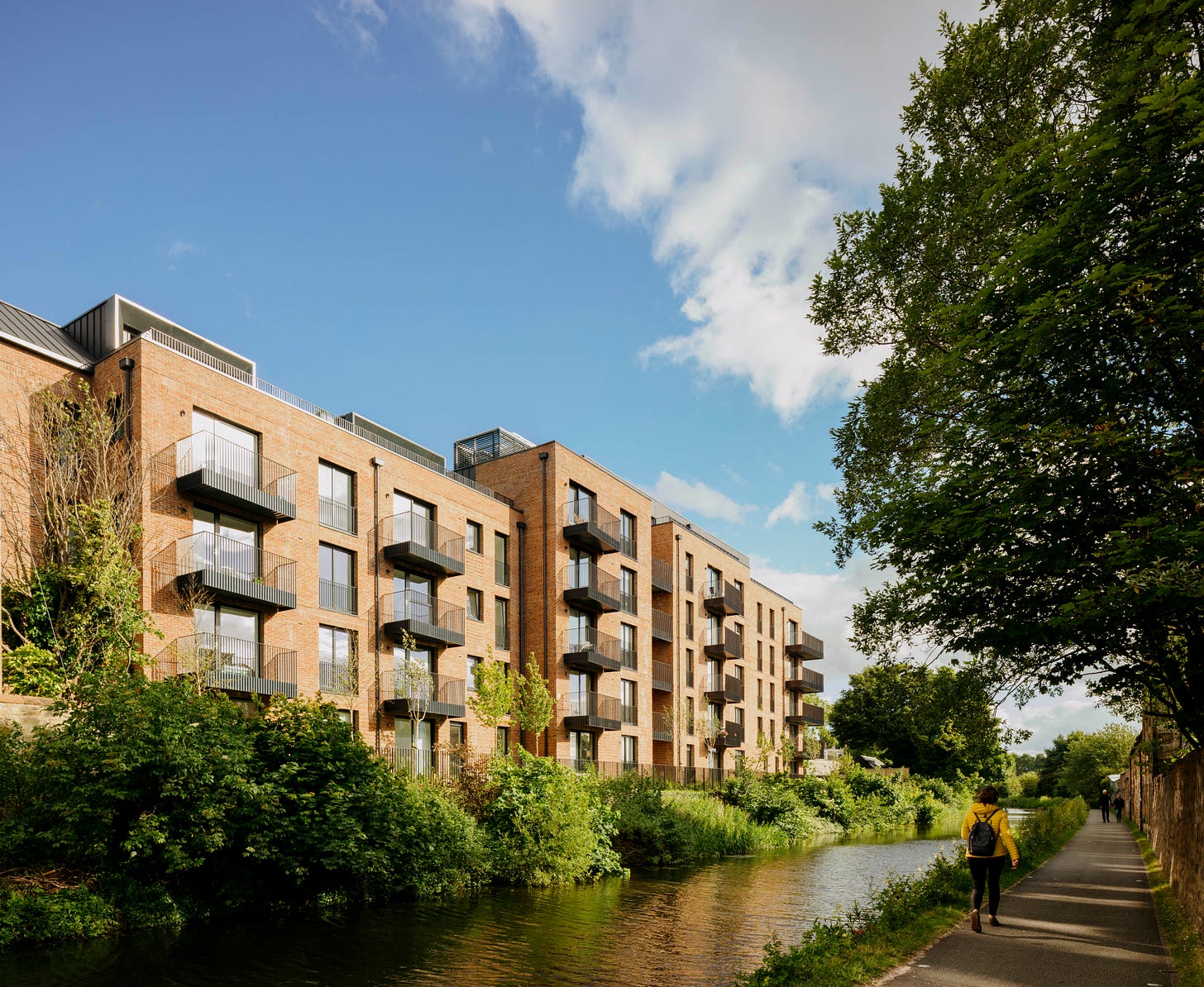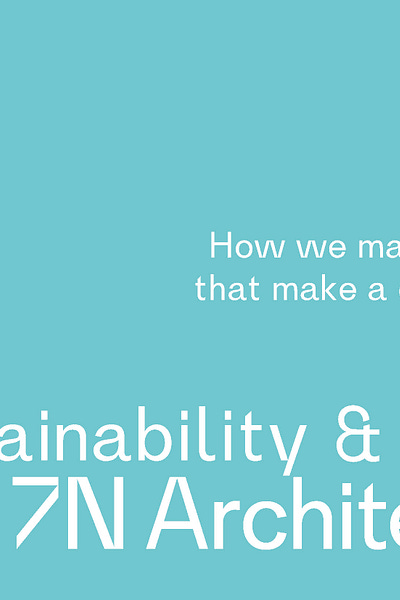Welcome to 7N Architects’ quarterly newsletter.
We hope that this will give you a window into some of the exciting things that have been keeping us busy and inspired.
This edition: planning secured for West Town, completions at Rowanbank Gardens & Temple Park Crescent, and introducing ‘How we make places that make a difference’, our new guide to how we approach sustainability & ESG.
Planning Secured for £2bn West Town Masterplan
Shortly before the end of 2024, 7N successfully secured planning for our client Drum Property Group, for one of the most significant and sustainable urban expansions of Edinburgh in a generation.
The City of Edinburgh Council’s development sub-committee voted unanimously to approve the proposals for the 205-acre West Town site in a move that is set to significantly help address Edinburgh’s housing emergency, with 7,000 homes planned within a mixed-use 20-minute neighbourhood.
The West Town site, located at the capital’s western gateway, is regarded as one of the most strategically important development areas in the UK. Our proposals grow the neighbourhood around an existing tram stop and will create a vibrant and modern mixed-use community. This includes space for a primary and high schools, and other civic and social uses that will sustain the 20-minute neighbourhood community. These will be complemented by sustainable movement strategy and generous green spaces, including a 5.5-acre central park, several pocket parks, and wildlife corridors.
The £2bn project’s capacity for 7,000 new homes (including 2,500 affordable), means it will become the biggest homes-led development within Edinburgh in modern times. The strength of this ambition has been underlined by Drum’s commitment through the project’s development and consultation. Drum’s Group Managing Director, Graeme Bone, commented on approval:
“We now have the once-in-a-generation opportunity to make West Town an exemplar, sustainable 20-minute neighbourhood on a par with the best new developments taking place anywhere across the UK and Europe.”
The masterplan design team was led by 7N Architects in collaboration with OPEN, Avison Young, WSP, and Gardiner & Theobald.
Visualisations by DAAKO
Rowanbank Gardens: A New Standard for Sustainable Urban Living
We were pleased to see the first residents move into Rowanbank Gardens in the second-half of 2024 — a significant milestone that we were delighted to celebrate with our client, Artisan Real Estate.
The development features 126 new mixed-tenure homes, including a high proportion of family accommodation, around a vibrant residents’ courtyard garden. This shared landscape serves as the natural heart of the community, complete with communal growing beds and fruit trees that have become key amenities for the new residents.
Rowanbank Gardens sets industry leading benchmarks for sustainable urban living, incorporating an all-electric design, fabric-first approaches to its envelope, heat recovery, and other energy-efficient systems. Through these measures, the development significantly reduces carbon emissions and is achieving performance levels well beyond current regulatory requirements.
Seeing this pioneering low-carbon neighbourhood come to life has been immensely rewarding. We’re grateful to everyone who contributed to making Rowanbank Gardens a reality, demonstrating how innovative and sustainable design can shape the future of Edinburgh’s residential landscape.
Photograph by David Barbour
Temple Park Crescent: Unlocking a Problematic Brownfield Site
Another 2024 completion was our Temple Park Crescent project for S1 Developments and C-urb. This scheme delivers 46 new homes, including affordable and family housing, transforming a challenging brownfield site into a vibrant canalside community.
Occupying a prime location, the project repairs a long-standing gap in the tenement streetscape that was left by a former commercial garage. A carefully curated palette of materials and colours ensures the new buildings integrate seamlessly with both the historic character of this Merchiston street, the Union Canal frontage, and the wider Edinburgh context.
Designed for flexible family living, the development features a shared garden beside the canal, complete with a communal grow space. Sustainability is embedded throughout, with a rooftop air-source heat pump array and heat recovery systems improving energy efficiency and reducing environmental impact.
Now that residents have moved in, it is rewarding to see the streetscape restored and both the crescent and towpath revitalised. Temple Park Crescent stands as a strong example of how developers can optimise city-centre infill sites in a sensitive and sustainable way—helping to address Edinburgh’s growing housing needs.
Photographs by Will Scott
Sustainability & ESG: How we Make Places that Make a Difference
How We Make Places that Make a Difference is a comprehensive overview of 7N Architects’ approach to sustainability and ESG, outlining our vision, principles, and commitment to creating lasting, high-quality places. In publishing this new annual document, we set out our design philosophy — underpinned by robust strategies to reduce whole-life carbon and achieve Net Zero — and reflecting our holistic approach to environmental, social, and economic sustainability.
As Architects, we recognise the significant role our work plays in shaping the environmental impact of our urban landscapes. We are also proud that we have the ability and expertise to demonstrate to building and landowners how their choices around sustainability and value can maximise investment value through intelligent solutions that can simultaneously enhance communities, and benefit the environment.
Our track record of delivering successful projects over many years reaffirms our belief in the power of placemaking. Thoughtfully designed places attract and sustain vibrant neighbourhoods, supporting social cohesion, wellbeing, and local identity, while also enhancing desirability and both property and civil value. By creating places that endure, we ensure the best use of limited resources and delivering sustainable outcomes. After all, the most sustainable development is one that is well-loved, well-used, and stands the test of time.
In this booklet, we explore:
How our placemaking expertise is enhancing ESG values across a range of development types;
Our commitment to doing more with less — prioritising lean and passive design strategies;
The ways we collaborate with communities to understand and respond to their unique needs;
How our internal structures reflect our long-term commitment to sustainability, both within our practice and the places we shape.
How We Make Places that Make a Difference is available for download at the above link and we look forward to sharing more insights with you in the future.

